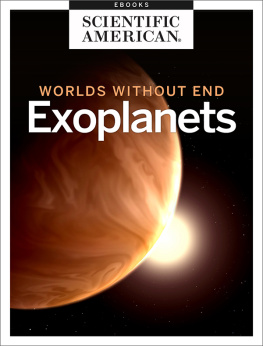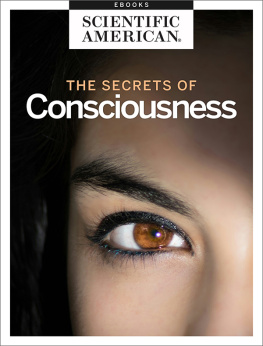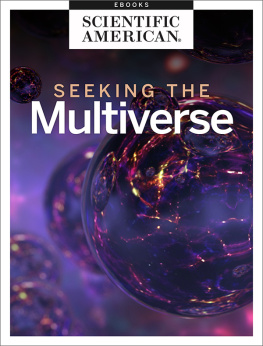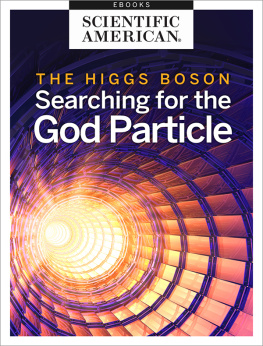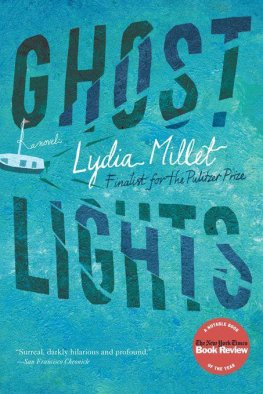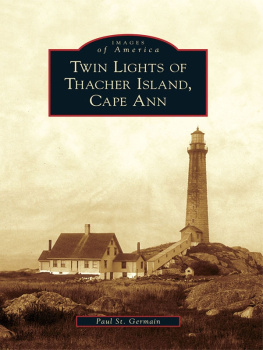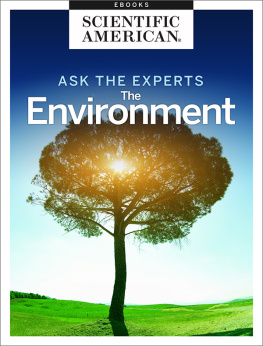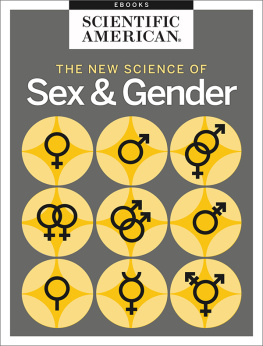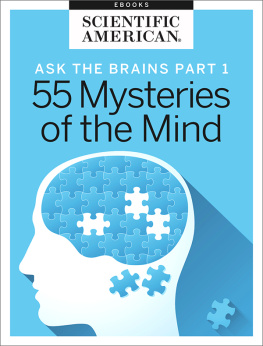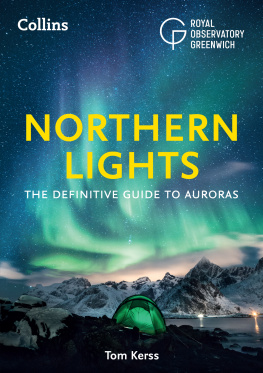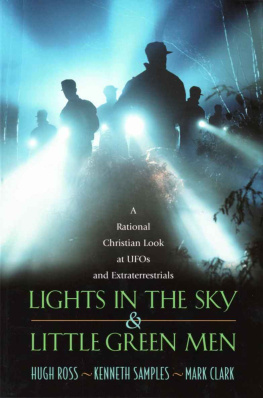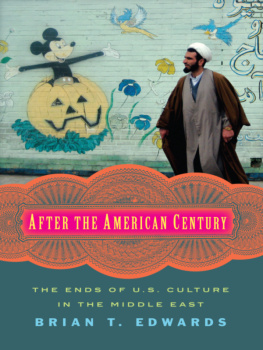Scientific American - Lights Out: How It All Ends
Here you can read online Scientific American - Lights Out: How It All Ends full text of the book (entire story) in english for free. Download pdf and epub, get meaning, cover and reviews about this ebook. year: 2012, publisher: Scientific American, genre: Politics. Description of the work, (preface) as well as reviews are available. Best literature library LitArk.com created for fans of good reading and offers a wide selection of genres:
Romance novel
Science fiction
Adventure
Detective
Science
History
Home and family
Prose
Art
Politics
Computer
Non-fiction
Religion
Business
Children
Humor
Choose a favorite category and find really read worthwhile books. Enjoy immersion in the world of imagination, feel the emotions of the characters or learn something new for yourself, make an fascinating discovery.
- Book:Lights Out: How It All Ends
- Author:
- Publisher:Scientific American
- Genre:
- Year:2012
- Rating:4 / 5
- Favourites:Add to favourites
- Your mark:
- 80
- 1
- 2
- 3
- 4
- 5
Lights Out: How It All Ends: summary, description and annotation
We offer to read an annotation, description, summary or preface (depends on what the author of the book "Lights Out: How It All Ends" wrote himself). If you haven't found the necessary information about the book — write in the comments, we will try to find it.
Scientific American: author's other books
Who wrote Lights Out: How It All Ends? Find out the surname, the name of the author of the book and a list of all author's works by series.
Lights Out: How It All Ends — read online for free the complete book (whole text) full work
Below is the text of the book, divided by pages. System saving the place of the last page read, allows you to conveniently read the book "Lights Out: How It All Ends" online for free, without having to search again every time where you left off. Put a bookmark, and you can go to the page where you finished reading at any time.
Font size:
Interval:
Bookmark:

How It All Ends.
From the Editors of Scientific American
Letters to the Editor
Scientific American
One New York Plaza
Suite 4500
New York, NY 10004-1562
or editors@sciam.com
Copyright 2017 Scientific American, a division of Nature America, Inc.
Scientific American is a registered trademark of Nature America, Inc.
All rights reserved.
Published by Scientific American
www.scientificamerican.com
ISBN: 978-1-466824195


How It All Ends.
From the Editors of Scientific American
Table of Contents
Introductionby Jesse Emspak
Section 1
1.1
by John Matson and John Pavlus
1.2
by Julie Wakefield
Section 2
2.1
by W. Wayt Gibbs and Christine Soares
2.2
by Maryn McKenna
Section 3
3.1
by Lester R. Brown
3.2
by David A. Viccari
Section 4
4.1
by Richard P. Turco, Owen B. Toon, Thomas P. Ackerman, James B. Pollack and Carl Sagan
4.2
by Kevin N. Lewis
4.3
by Alan Robock and Owen Brian Toon
Section 5
5.1
by Tom Gehrels
5.2
by Edward T. Lu
5.3
by Robin Lloyd
Section 6
6.1
by Peter D. Ward
6.2
by Ilya N. Bindeman
Section 7
7.1
by Richard B. Alley
7.2
by Alex de Sherbinin, Koko Warner and Charles Ehrhart
7.3
by Fred Guterl
Section 8
8.1
by Lawrence M. Krauss and Glenn D. Starkman
8.2
by George Musser
Introduction: The Four Horsemen
The four horsemen of the apocalypse are traditionally war, famine, plague and death; or in older versions, war, famine, death and a figure often presented as conquest. Some would call death a bit redundant since war and famine often get you there in any case. But eschatology has never been entirely consistent, and it needn't be.
Classical authors were familiar with only four horsemen, but modern ones could add environmental devastation and nearby supernovas. This book is a compilation of such end of the world scenariosor at least, things that could make human life really difficult. Some are apocalyptic, others less so, but they show that even if one isn't taking the Book of Revelation or the supposed Mayan prophecy as a template, thinking about it is fascinatingand sobering.
Some endings only affect humansmass starvation for us isn't likely to bother rats. Plagues have often decimated one groupthe Native Americans come to mindwhile leaving others intact. Meanwhile, with the invention of nuclear weapons, a war that eliminates human life on Earth is still a very real possibility.
Then there are cosmic-scale catastrophes that could profoundly change life on Earth. Meteor strikes, nearby gamma-ray bursts, and supernovae, all have the very real possibility, however remote, of sterilizing the planet.
And some scenarios are simply inevitable. The universe is expanding, and there's no sign it will stop. Eventually, the temperature will drop, protons will decay, and atoms could be torn apart. Unless our distant descendants find another universe to live in, prospects look pretty grim. The physical impossibility of eternal life is likely to disappoint some, but one might as well ask if it's not better to know that yes, we really are all headed to the same place.
After all, we all know the world will end, just as we know we will die. We can't predict the date of our individual deaths, but we can say that the laws of physics, chemistry and biology dictate certain outcomes for the species, planets, stars, and universe.
The ability to map out the end also grants us the power to avert it, at least in some cases. Included in this book is a seminal piece outlining the possibility of nuclear winter. Former Soviet leader Mikhail Gorbachev has stated that such studies underscored the fact that nuclear war was unacceptable, and were a major impetus for him to seek to reduce tensions with the United States. As a species we've tackled ozone depletion, and there's no reason other environmental problems can't be dealt with as well. The same technologies that allow us to destroy cities on the other side of the planet can stop an asteroid from visiting on humans the fate of the dinosaurs. The question was never technical ability, only political will.
So while much of this book might seem a gloomy exercise, there's an optimistic side too: we may not endure eternally, but stupidity or hubris doesn't have to end our world prematurely.
-Jesse Emspak
Book Editor


Laying Odds On The Apocalypse
by John Matson and John Pavlus
With all due respect to T. S. Eliot, maybe the world really does end with a bang, not a whimper. Whether of our own creation (nuclear holocaust) or of natures (asteroid impact), plenty of cataclysms could doom civilizationperhaps even putting the survival of the species in jeopardy. We assessed the likelihood of several doomsday scenarios, from oft-discussed threats such as climate change to more fanciful ideas such as quantum fluctuations that would destroy our universe. The probabilities listed here are not scientific factan impossible goal when estimating the possibility of unprecedented eventsbut informed conjecture based on researchers expert opinions. We also relied on those opinions to approximate how catastrophic each event would be, ranging from 1 (localized chaos) to 10 (good-bye, universe).
KILLER PANDEMIC
One in 2 in the next 30 years
Destruction Ranking: 4
Humankind is more vulnerable than ever to a devastating, Black Deathstyle pandemic, says Joseph Fair, director of global field operations for the Global Viral Forecasting Initiative. He declined to predict when one might strike, instead rating civilization as a lowly two on a 10-point preparedness scale. The next pandemic, Fair says, will likely be a pox or a virus that is either new to humans or a more deadly adaptation of a common virus.
SOLAR SUPERSTORM
One in 20 in the next 15 years
Destruction Ranking: 2
We dont want to be alarmist, says Daniel N. Baker, a space scientist at the University of Colorado at Boulder, but a solar eruption could grow large enough to knock out the power grids and communication systems over much of the world. If that were to occur today with our modern, highly electronically connected society, Baker says, it would undoubtedly be devastating to the most advanced countries.
RUNAWAY GLOBAL WARMING
One in 2 in the next 200 years
Destruction Ranking: 3
The ice sheets in Greenland and West Antarctica together contain enough water to raise global sea levels by about 12 meters, erasing coastal cities and making refugees of hundreds of millions of people. Without a change of behavior, humankind could set into motion the irreversible melting of both ice sheets by the end of this century, says Henry Pollack, an emeritus professor of geophysics at the University of Michigan at Ann Arbor and author of A World without Ice (Avery, 2009). My particular feeling is that itll be touch and go as to whether we can actually achieve the avoidance of Greenland and West Antarctic ice loss, Pollack says. The consequences of displacing so many peoplethe world has never dealt with something like that.
Font size:
Interval:
Bookmark:
Similar books «Lights Out: How It All Ends»
Look at similar books to Lights Out: How It All Ends. We have selected literature similar in name and meaning in the hope of providing readers with more options to find new, interesting, not yet read works.
Discussion, reviews of the book Lights Out: How It All Ends and just readers' own opinions. Leave your comments, write what you think about the work, its meaning or the main characters. Specify what exactly you liked and what you didn't like, and why you think so.


